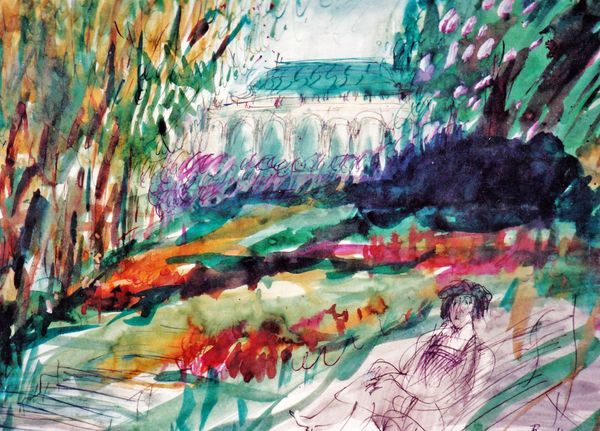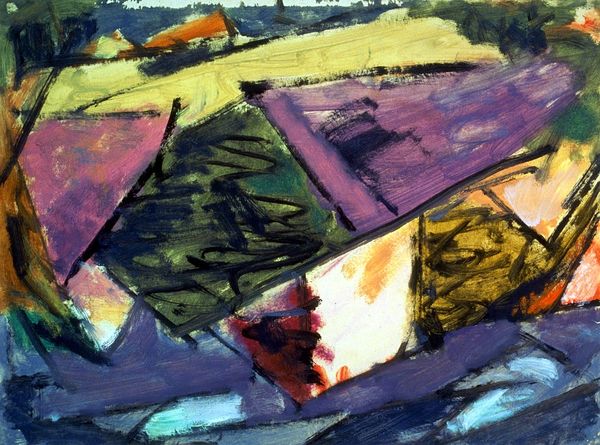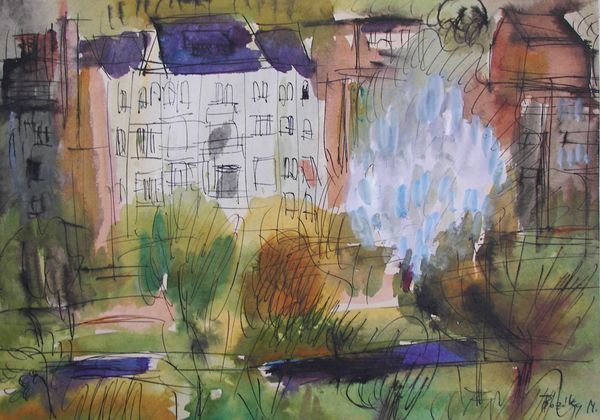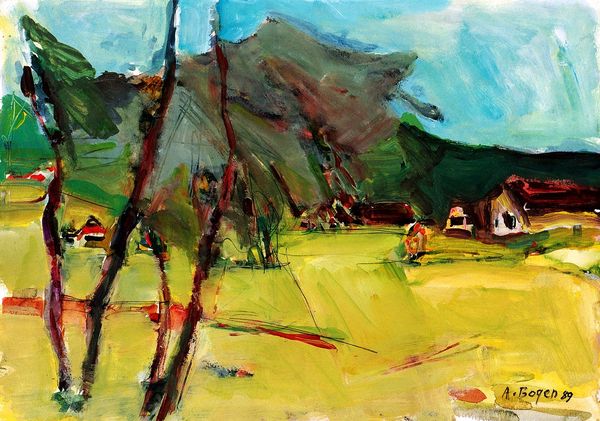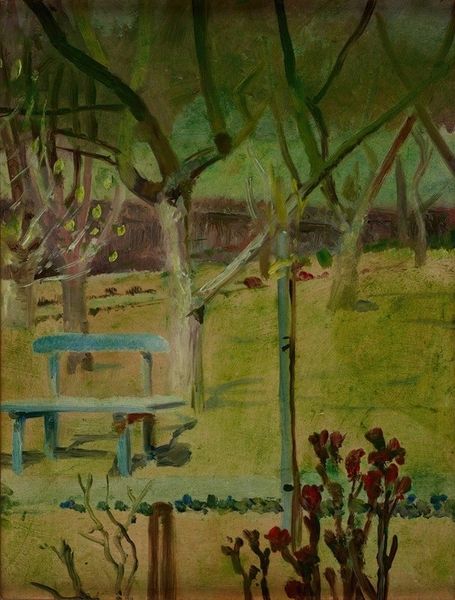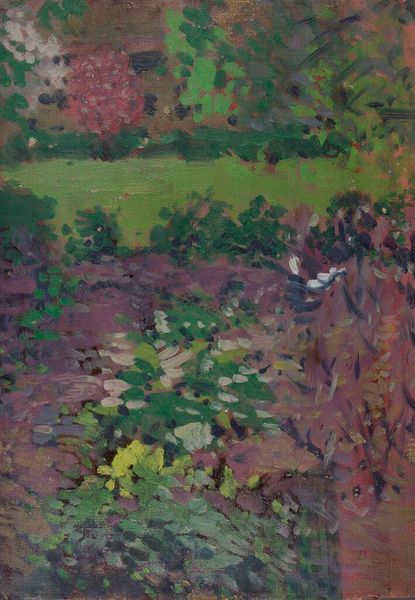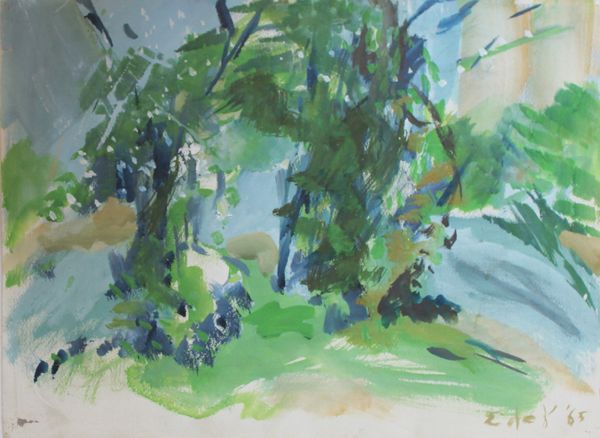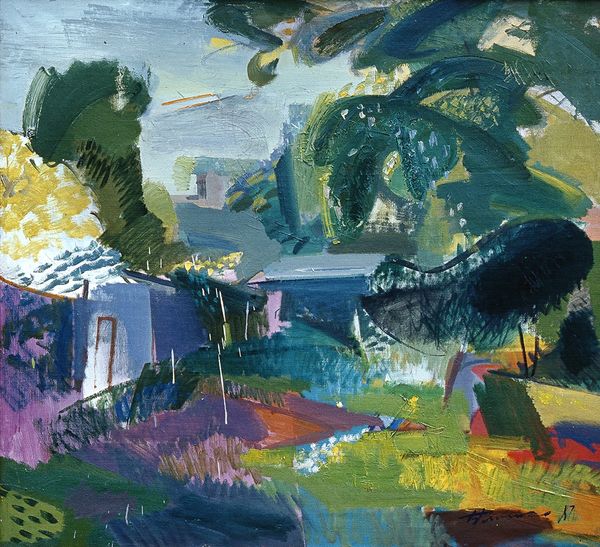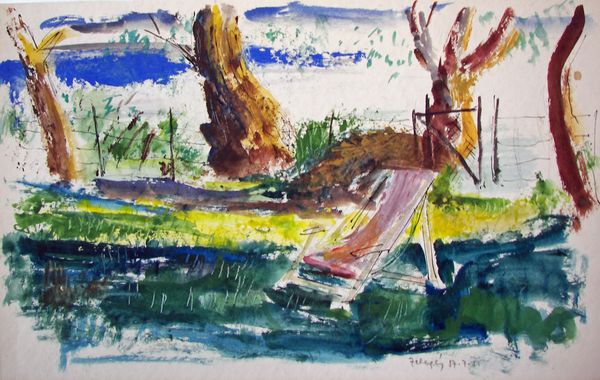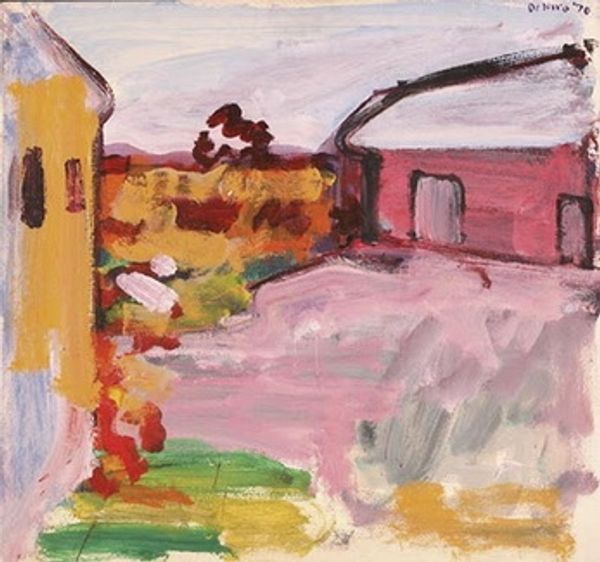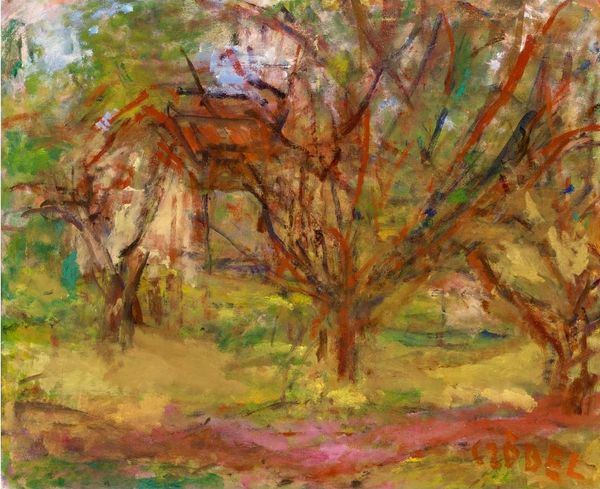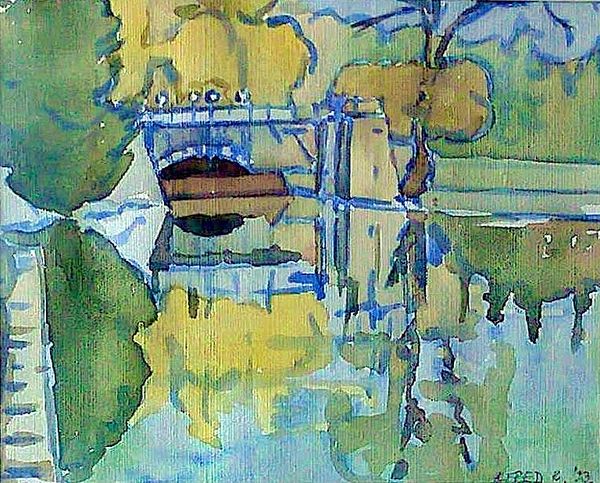
plein-air, oil-paint
#
plein-air
#
oil-paint
#
landscape
#
german-expressionism
#
house
#
oil painting
#
expressionism
#
expressionist
Copyright: Public domain
Curator: Before us, we have Egon Schiele's "Peasant Homestead in a Landscape," completed in 1913 using oil paint in plein-air. Editor: My initial response is a visceral one. It feels almost violently green. The homestead itself seems engulfed, nearly suffocated, by the landscape around it. Curator: I see the dynamism in that observation. Structurally, notice how Schiele uses stark contrasts of color and short, energetic brushstrokes to create a sense of unease and agitation, challenging traditional landscape painting conventions. It exemplifies early German Expressionism in its subjective emotional portrayal. Editor: Indeed. I'm drawn to the physical application of paint, those impastoed surfaces and the visible marks of his labor. Consider the materiality; cheap paints perhaps, applied roughly, reflective of the harsh realities and poverty that surrounded rural life. Curator: That's astute. But it's not just documentation; Schiele distorts perspective, the lines are harsh, and the colors are unnatural. Look at how that compression intensifies the subject’s alienation. This landscape becomes a psychological projection. Editor: Yes, it could be seen that way, but what are the social underpinnings of the expression? How did the material conditions – the limitations and the very tangible dirt of rural life—impact the creation and subject of his art? This resonates with the Expressionist aesthetic yet goes beyond. Curator: True. Still, focusing on those formal contrasts-- the claustrophobic composition against the vibrant color clashes--emphasizes a deeper internal conflict. Isn’t it the very visual tension that makes it compelling? Editor: Well, consider the historical moment: just before World War One. Shortages of materials and social unrest directly inform Schiele's style. Understanding the context reframes those formal contrasts within real, pressing human conditions. Curator: So it does. I confess my view tends to separate the artwork from its place. Editor: A tempting approach but for me inseparable. The "how" and "why" an artwork exists matters greatly in appreciating its expression and the realities of labor and material access within the rural communities he was observing and drawing from. Curator: A vital lesson to always question those perspectives and revisit the work with newer tools. Editor: I think approaching it with this in mind we might appreciate all aspects. Thank you.
Comments
No comments
Be the first to comment and join the conversation on the ultimate creative platform.
